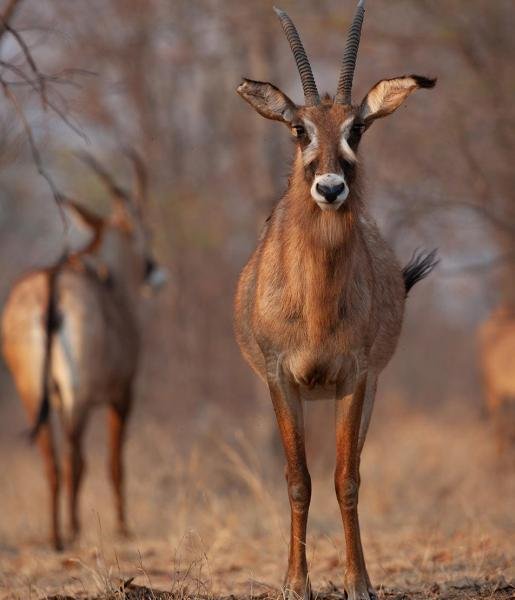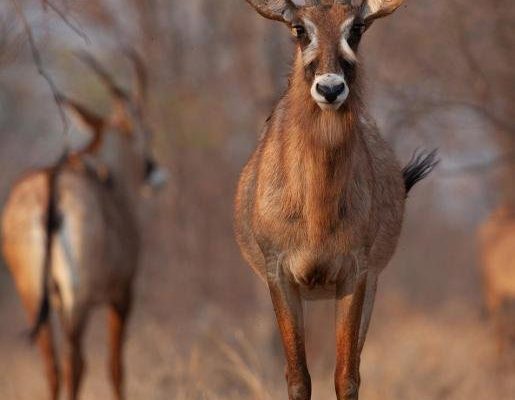
In the heart of Africa, roan antelopes roam the grassy plains and forest edges, showcasing their strength and beauty. Understanding their diet and hunting methods can provide insight into their survival skills and how they adapt to their environment. Let’s dive deeper into the roan antelope’s eating habits and their strategies for staying safe and thriving in the wild.
What Do Roan Antelopes Eat?
Roan antelopes are herbivores, meaning their diet primarily consists of plants. They have a refined palate, favoring tender grasses and leafy vegetation. You might picture them as the picky eaters of the savanna, but their choices are all about survival.
- Grasses: Roan antelopes love to munch on a variety of grasses, particularly those that are young and fresh. These are often found in open plains, where they can graze freely.
- Leaves and Shoots: In addition to grasses, they enjoy the leaves and shoots of shrubs and other plants. This helps them to diversify their diet and gain essential nutrients.
- Bark and Fruits: Occasionally, they may nibble on bark or fruits when grasses are scarce, helping them adapt to different environments.
Roan antelopes are selective feeders, and this ensures they get the best nutrition possible. Much like a gourmet chef chooses the finest ingredients, these antelopes pick the most nutritious plants available. This strategy is crucial, especially during dry seasons when food resources can dwindle.
How Do Roan Antelopes Forage?
Foraging is an essential skill for roan antelopes, and they do it with impressive efficiency. Picture them as nature’s skilled gardeners, carefully managing their food sources. Here’s how they go about it:
– Observation: Roan antelopes are keen observers. They often scan their environment for the best patches of grass or foliage. This helps them avoid areas where predators might lurk, allowing them to graze more safely.
– Social Grazing: These animals are social creatures and often feed in groups. Grazing together not only helps them locate food more efficiently but also provides some level of safety in numbers. When one antelope is alert, the others can enjoy their meal without worry.
– Movement Patterns: Roan antelopes have specific movement patterns. They’ll often follow the rains to find fresh grasses and other plants. This behavior is akin to nomadic lifestyles seen in other animal species.
This calculated foraging strategy highlights their ability to adapt to changing environments, ensuring they always find food when they need it most.
Predators and Challenges in the Wild
Like many animals, roan antelopes face threats from predators in their natural habitats. These challenges shape their behavior and influence their diet. You might be wondering, “What kind of threats do they encounter?”
– Predators: Roan antelopes are preyed upon by various animals, including lions, hyenas, and leopards. Their size and strength help them fend off some threats, but they must remain vigilant.
– Habitat Loss: Deforestation and human encroachment can disrupt their food sources, leading to competition and stress. When their habitat shrinks, the pressure to find adequate nutrition increases, forcing them to adapt quickly.
– Seasonal Changes: As seasons change, so do food availability and predator dynamics. Roan antelopes have to be flexible in their feeding strategy, often changing their grazing habits based on what’s available.
Understanding these challenges helps us appreciate the roan antelope’s resilience and intelligence.
Hunting Strategies of the Roan Antelope
While roan antelopes are not hunters in the traditional sense, they have learned to survive through specific behaviors that keep them safe from predators. Think of their strategies as a game of chess rather than a race. Here’s how they play it:
– Staying Alert: Roan antelopes are naturally vigilant animals. They often use their excellent eyesight to spot potential threats from afar. By identifying predators early, they can make strategic decisions about where to graze.
– Camouflage: Their coloration plays a significant role in evading predators. The roan antelope’s dark chestnut color blends well with the dry grasses of their habitat, making it harder for predators to spot them.
– Flight Response: When threatened, these antelopes rely on their speed and agility to escape. They can reach impressive speeds, making them difficult targets for predators. Picture them as sprinters on the savanna, darting away when danger approaches.
These strategies showcase the roan antelope’s ability to survive in a competitive world, using more than just size and strength to navigate their environment.
Impact of Diet on Roan Antelope Health
The diet of a roan antelope directly affects its health and wellbeing. Just like we feel better when we eat nutritious foods, these animals thrive when they consume a varied and balanced diet. Here are a few ways their diet impacts their overall health:
– Nutrient Intake: A diverse diet ensures that roan antelopes receive essential nutrients like protein and vitamins. This is vital for their growth, reproduction, and immune system function.
– Grazing Behavior: Regular foraging helps maintain their digestive system. As these animals graze continuously, they promote good gut health, leading to better nutrient absorption.
– Adaptability: The ability to switch between food sources based on availability means they can cope with changes in their environment. This resilience is crucial, especially during harsh weather conditions.
By understanding their dietary needs, we can better appreciate the importance of conservation efforts aimed at protecting their habitats and ensuring their survival.
Conservation Efforts for Roan Antelopes
With increasing threats to their habitats, roan antelopes need our support more than ever. Conservation efforts play a crucial role in safeguarding their populations and ensuring they continue to thrive.
– Protected Areas: Establishing national parks and reserves helps create safe havens for roan antelopes. These protected areas maintain their natural environments while providing an opportunity for ecotourism.
– Community Engagement: Involving local communities in conservation efforts is essential. Educating them about the importance of preserving wildlife can lead to more sustainable practices that benefit both people and animals.
– Research and Monitoring: Scientists are continuously studying roan antelopes to understand their behaviors and needs better. This research informs conservation strategies and helps monitor populations over time.
With combined efforts, we can make a difference in protecting the roan antelope and ensuring a balanced ecosystem in their native habitats.
The roan antelope is a remarkable creature, showcasing resilience and adaptability in the face of challenges. By understanding their diet and hunting strategies, we gain a greater appreciation for these animals and the intricate ecosystems in which they thrive. Just like a finely tuned machine, every aspect of their lives works together to ensure their survival.
So, the next time you think about the majesty of wildlife, remember the roan antelope and the vital role they play in the natural world. Their journey reflects the delicate balance of life, and by supporting conservation efforts, we can help protect these incredible animals for generations to come.

